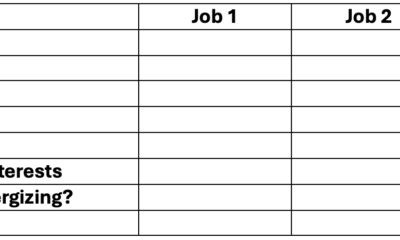Taxes
15 Essential Tax Saving Tips for Small Business Owners

I call this a “phantom expense”—you’re deducting depreciation related to the building that doesn’t exist, thus lowering taxable income. As discussed more in tip 12, if your business is an S-corp, you’ll want to own the building personally and lease it to your business.
When you purchase a warehouse, an office building, or a residential rental property, you may consider performing a cost segregation analysis. Cost segregation analyses are detailed studies of how much building parts and fixtures cost. They are usually done by a trained professional, like an engineer, appraiser, or contractor.
During the study, the parts of the building that make it up will be looked at and given a depreciable life of five, seven, or fifteen years. This can be a great way to save money on taxes, take advantage of the extra depreciation deduction, and get more cash.
By separating the cost of MACRS property with a shorter life span than the cost of the building, you can claim extra depreciation on the individual parts of the property. So, any equipment, furniture, or fixtures on the property—like a heating, ventilation, and air conditioning (HVAC) system—will be qualified for bonus depreciation.
Bonus depreciation and section 179 expense are both rules that allow you to currently deduct the entire cost of fixed asset purchases, instead of depreciating them over a period of years. Before 2023, bonus depreciation was allowed on 100% of the cost of qualifying purchases, making section 179 mostly unnecessary.
Bonus depreciation is limited to 60% of the cost of qualifying assets in 2024 and 40% in 2025. So, you can maximize your deduction by first claiming the maximum section 179 and then claiming bonus depreciation on the remaining costs.
The Work Opportunity Tax Credit (WOTC) is available to business owners who hire and pay workers with certification from a state workforce agency as members of one of the 10 identified targeted groups listed below:
1. Veterans
2. Ex-felons
3. IV-A recipients
4. Designated community residents
5. Vocational rehabilitation referrals
6. Summer youth employees
7. Supplemental Nutrition Assistance Program (SNAP) benefits recipients
8. Supplemental Security Income (SSI) recipients
9. Long-term family assistance recipients
10. Long-term unemployment recipient
The credit is worth 40% of the qualified first-year pay of workers who worked at least 400 hours. For employees who worked at least 120 hours but less than 400 hours in their first year, the credit is lowered to 25% of their qualified first-year wages. Most businesses can get about $2,400 in WOTC.
To take advantage of this money-saving tax credit, you’ll need to complete IRS Form 8850 before you make an offer to your potential employee.
Many small business owners can deduct the cost of operating a qualified home office. With the home office deduction, you can write off some of the costs of owning your home when you do your taxes.
The business part of real estate taxes, mortgage interest, rent, casualty losses, utilities, insurance, depreciation, maintenance, and repairs are all business costs that can be deducted. If you don’t want to track actual expenses, you can deduct a standard rate of $5 per square foot for a maximum of 300 square feet.
Deducting mileage is an easy decision if you regularly drive your personal vehicle for business purposes. At 67 cents per mile driven in 2024 (70 cents per mile in 2025), the standard mileage rate can very quickly add up to a big tax deduction. You may also find that deducting actual expenses may be more beneficial than deducting standard mileage. No matter which method you choose, note that commuting to and from your business location isn’t deductible as a business trip.
In the old days, taxpayers tried to keep manual mileage logs and it was a pretty big hassle. But now, there are many great mileage tracking apps that will run in the background of your phone and automatically record the start and stop of each trip. At the end of the day, you just swipe left or right to separate business from personal trips.
The primary tax advantage of converting your sole proprietorship to an S-corp is payroll tax savings.
– In a sole proprietorship, all of the business income is subject to both self-employment tax (the equivalent of payroll taxes paid by employees) and income taxes.
– With an S-corp, only W-2 wages and salary paid to the owner are subject to payroll taxes. The business income remaining after owner compensation is subject to income taxes but not payroll taxes.
The timing of the S-corp conversion is important. A good rule of thumb is to make the conversion when you hire employees.
Prior to having employees, it’s hard to argue that income from the business is attributable to anything other than the owner’s labor. Therefore, the IRS could argue that all the income of the S-corp should be paid in wages, and you won’t save any payroll taxes.
Wages paid are taxable for payroll tax purposes, but other business payments—such as interest, rent, and shareholder distributions—aren’t. Therefore, you can save payroll taxes by withdrawing money as rent, interest, and shareholder distributions instead of wages.
1. Minimize Your Compensation as an S-corp shareholder
As a shareholder/employee, your compensation must be paid through the payroll system and have payroll taxes withheld from it. The way to save payroll taxes is to minimize your compensation while finding other ways to withdraw the cash you need.
However—and this is extremely important—you must pay yourself a reasonable salary as an S-corp shareholder for the business services you perform. You can’t intentionally underpay yourself.
Determining a reasonable salary is a huge gray area where the IRS and taxpayers are fighting constantly, so be sure you can justify the salary you pay yourself. A good rule of thumb is to pay yourself a similar amount to what an outside party would be paid for doing that same job. You can use job postings that list salaries as a way to gauge market compensation.
2. Loan Your S-corp Money
If your business needs an infusion of cash, consider loaning your business money instead of investing it as equity capital. The corporation will then repay the loan to you plus interest at a reasonable rate.
The interest is tax-deductible by the corporation and taxable to you, so you don’t save income tax—but you do withdraw the interest without paying payroll taxes. Ensure your loan is documented with a promissory note that has a reasonable interest rate.
3. Lease Real Property to Your S-corp
A good general rule to follow is to not own real estate inside a corporation. Instead, own the real estate personally, or in a single-member LLC if you’re concerned about liability protection. Then, rent the real estate to your S-corp at a profit. Then, you’re able to withdraw the rent from your corporation without paying payroll taxes. As with all these strategies, see to it that the dollar amounts of any contracts are reasonable.
4. Take a Shareholder Distribution From Your S-corp
The simplest way to take money out of your S-corp without paying payroll tax is to take a shareholder distribution. It’s neither deductible by the S-corp nor taxable to you, so it has no income tax consequences. However, excessive shareholder distributions could cause the IRS to question whether your compensation is high enough given the company’s success.
Various Types of S-Corp Shareholder Payments
Another problem with taking a shareholder distribution (and the reason you need tips 2 and 3) is that if the company is struggling, a shareholder distribution may not be reasonable. However, if the company has a signed promissory note (tip 2) or lease (tip 3) with you, then they’re justified in making payments to you regardless of how they’re performing. This ensures your payments from the S-corp will continue to be reasonable and can be counted on to pay your living expenses.
13. Use the Tax-loss Harvesting Strategy
Tax-loss harvesting is selling your investments that have an unrealized loss. By selling investments that have declined in value, you recognize a capital loss that can be used to offset capital gains for the year plus $3,000 of other types of income, like wages, dividends, and interest.
One limitation to this strategy is the wash sale rules, which disallow your capital loss if you purchase a substantially identical asset within 30 days before or after your sale at a loss. In other words, you can’t recognize a loss on the sale of Company A stock and then immediately repurchase it.
14. Make Estimated Tax Payments
Small business owners are required to make estimated tax payments on their business income.
- S-corp owners must estimate the amount of income tax on their business income and submit the payments in four quarterly installments.
- Sole proprietors and partners must estimate the amount of both self-employment tax and income tax on their business income.
- Self-employment tax is 15.3% and is in addition to income tax, which could be as high as 37% in 2025. Needless to say, sole proprietors need to stay on top of their estimated payments or they could fall far behind very quickly.
Generally, estimated tax payments are only necessary when you have income that isn’t subject to withholding, such as business income. However, the amount of the payments is determined by estimating the total tax on your tax return and subtracting any projected withholding. You can head over to the IRS’s page on estimated taxes for more information.
15. Use W-2 Withholding to Avoid Underpayment Penalties
Many small business owners also have a 9-5 job. Withholding from this job’s pay can come in handy when tax planning for estimates.
The Importance of Paying Individual Estimated Taxes
When it comes to individual estimated taxes, the IRS expects payments to be made as income is earned, with quarterly installments being the norm. However, this can become complicated when unexpected income is received toward the end of the year.
It’s worth noting that income taxes from W-2 compensation are considered to be paid evenly throughout the year, regardless of when the income was actually withheld. This provides taxpayers with the flexibility to increase withholding at year-end to accommodate any unforeseen income received late in the year.
For instance, a taxpayer who receives both self-employment income and W-2 compensation could opt to have a year-end employee bonus withheld and remitted to the IRS for taxes. This can help offset any additional income received from their side business.
Frequently Asked Questions (FAQs)
How to Minimize Taxes as a Small Business Owner?
The key to minimizing taxes as a small business owner lies in maximizing deductions. Keeping meticulous records is crucial to identifying which deductions apply to your situation.
How Do LLC Owners Minimize Taxes?
LLC owners may find it beneficial to convert to an S-corp to eliminate self-employment taxes. This is because LLC earnings are subject to both self-employment and income taxes.
How Much Should I Save for Taxes as a Small Business Owner?
The amount you should set aside for taxes depends on your annual income. To avoid federal underpayment penalties, aim to pay at least 100% of the prior year’s tax (110% if your income exceeds $150,000). Some tax experts recommend saving 25% to 40% of your income for taxes, including any W-2 withholding.
Bottom Line
Effective tax planning for small business owners begins with organization and a robust bookkeeping system to generate accurate financial statements. Once you have your finances in order, consider enlisting the help of a tax professional to navigate the various tax deductions available to your business.
-

 Professional Development1 month ago
Professional Development1 month agoDrawing up your strategy
-

 Personal Growth2 months ago
Personal Growth2 months agoSucceeding as a ‘parentpreneur’: Top tips
-

 Videos2 months ago
Videos2 months agoGreat Leaders INSPIRE Others To Do Great Things
-

 Productivity1 month ago
Productivity1 month agoHow to Increase Remote Work Productivity
-

 Productivity2 months ago
Productivity2 months agoTips for Boosting Work Productivity
-

 Productivity2 months ago
Productivity2 months ago5 Ways to Increase Your Personal Assistant’s Productivity
-

 Leadership1 month ago
Leadership1 month agoHow to Tackle Big Challenges
-
Leadership1 month ago
Cutting Through the Clutter of Internal Communications





























